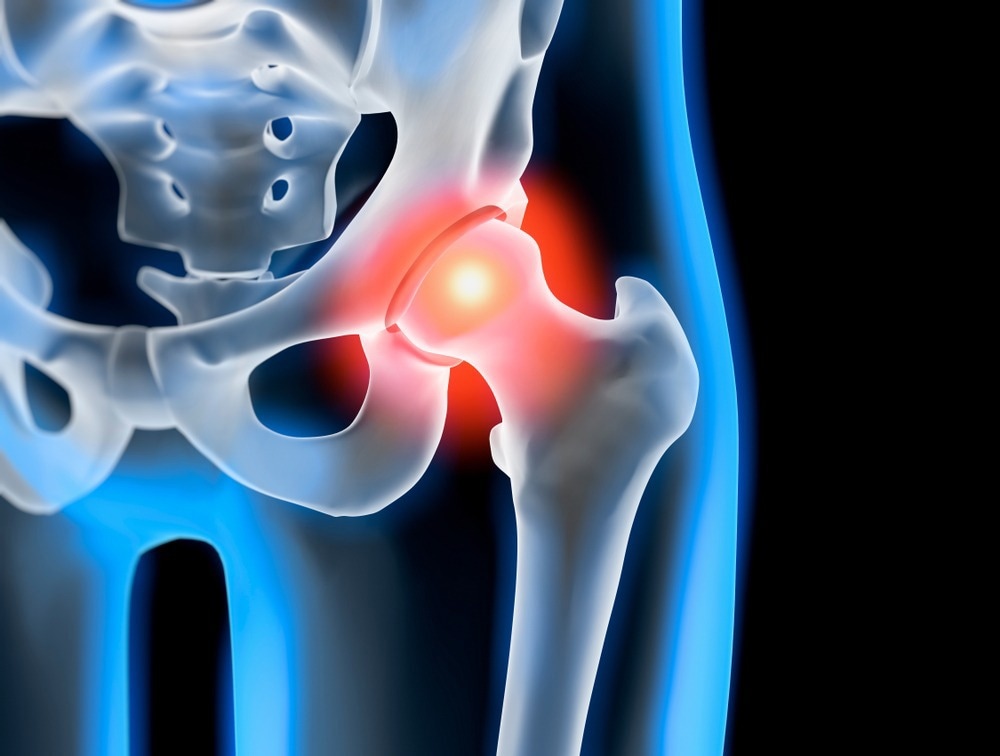 By Neha MathurReviewed by Danielle Ellis, B.Sc.Jun 8 2023
By Neha MathurReviewed by Danielle Ellis, B.Sc.Jun 8 2023In a recent article published in the Lancet Rheumatology, researchers used data from a long-term ongoing prospective cohort study in the Netherlands to compare the characteristics of long-COVID in inflammatory rheumatic diseases patients and healthy controls during the period when the severe acute respiratory syndrome coronavirus 2 (SARS-CoV-2) Omicron subvariants, BA.1/BA.2 were dominant.
 Study: Post-COVID condition in patients with inflammatory rheumatic diseases: a prospective cohort study in the Netherlands. Image Credit: peterschreiber.media/Shutterstock.com
Study: Post-COVID condition in patients with inflammatory rheumatic diseases: a prospective cohort study in the Netherlands. Image Credit: peterschreiber.media/Shutterstock.com
Background
The symptoms of inflammatory rheumatic diseases and long COVID are overlapping. Hence, it is tedious to classify patients of long COVID among patients of inflammatory rheumatic diseases.
Post-COVID condition is inherently heterogenous and poorly defined; however, it might include many persistent symptoms, such as fatigue, beyond the acute SARS-CoV-2 infection phase. Also, findings of epidemiological studies investigating long COVID have fetched immensely heterogeneous results and remained largely inconclusive.
Per recent studies, persistent inflammation and auto-immune reactions after the acute infection phase play a crucial role in the progression of post-COVID. However, all pathophysiological mechanisms underlying this condition also remain unclear. Thus, it is still unknown whether rheumatic disease patients are more susceptible to long-COVID and their clinical phenotype varies from other people.
About the study
Researchers invited patients aged ≥18 with inflammatory rheumatic diseases from the Rheumatology and Immunology Center in Amsterdam to participate in this retrospective cohort study between April 26, 2020, and March 1, 2021.
The study participants self-recruited their healthy controls with and without a history of coronavirus disease 2019 (COVID-19). Also, they were of comparable age (±5 years) and same gender and had no inflammatory rheumatic disease. It helped the researchers investigate the risk of the post-COVID condition, its symptoms, and the time taken to recover across the two cohorts while accounting for the shared symptoms of both diseases.
They used Kaplan-Meier survival analyses to compare the time taken to recover from long-COVID following Omicron infection between patients of two study cohorts during the first 26 weeks after disease onset. Likewise, they presented the variations in the symptomology of post-COVID condition across both cohorts as bar charts.
The researchers used a regression-based approach for causal mediation analyses to test the hypothesis that the severity of the acute phase of SARS-CoV-2 infection could be a mediator in the association between participant status and long-COVID, as studies have demonstrated that disease severity is a risk factor for the long-COVID in patients with mild COVID-19.
To this end, they collected demographic data of all the study participants using a baseline questionnaire sent on June 25, 2022. The study analyses on long-COVID condition post-Omicron infections covered only those participants who completed this first questionnaire.
Further, they calculated E-values for the association between participant status and post-COVID condition, an approach that establishes the robustness of the main study results. In the follow-up questionnaires, they reported their pre-existing diseases, medications, and COVID-19 clinical characteristics. They also collected serum samples during follow-up for analyses of SARS-CoV-2 antibodies testing.
Results
The final analysis set of the study comprised 1974 inflammatory rheumatic disease patients and 733 controls, whose mean age was 59 years. Patients with inflammatory rheumatic disease more frequently suffer from cardiovascular and pulmonary diseases and other health issues like diabetes and obesity.
The World Health Organization (WHO) defines participants with post-COVID as people with symptoms lasting at least eight weeks post-onset or three months of a diagnostic test, like reverse transcription-polymerase chain reaction (RT-PCR) that an alternative diagnosis cannot explain.
After applying the WHO criteria, the authors observed that more inflammatory rheumatic disease patients vs. healthy controls developed long-COVID; however, their symptomology and time to recovery were similar. Though the distribution of symptom types was comparable across groups, insomnia was more common in participants without a COVID-19 history.
Furthermore, they observed that inflammatory rheumatic disease patients with no COVID-19 history were more likely to complain of persistent symptoms characterizing long-COVID than healthy controls with an odds ratio (OR) of 2·52, which exceeded the computed E-values of 1·74 and 1·96.
Conclusions
The study data highlighted that the current WHO criteria for defining long-COVID in inflammatory rheumatic disease patients are inadequate. Thus, rheumatologists should carefully interpret all studies investigating long-COVID based on the WHO criteria. In addition, the authors advocated that rheumatologists adopt a nuanced attitude when informing their patients about the long-term repercussions of COVID-19.
Journal reference:
- Post-COVID condition in patients with inflammatory rheumatic diseases: a prospective cohort study in the Netherlands, Laura Boekel, Sadaf Atiqi, Maureen Leeuw, Femke Hooijberg, Yaëlle R. Besten, Rosa Wartena, Maurice Steenhuis, Erik Vogelzang, Casper Webers, Annelies Boonen, Martijn Gerritsen, Willem F Lems, Sander W Tas, Ronald F van Vollenhoven, Alexandre E Voskuyl, Irene van der Horst-Bruinsma, Mike Nurmohamed, Theo Rispens, Gertjan Wolbink, Lancet Rheumatol 2023 Published Online May 31, 2022, doi: https://doi.org/10.1016/S2665-9913(23)00127-3
https://www.thelancet.com/journals/lanrhe/article/PIIS2665-9913(23)00127-3/fulltext